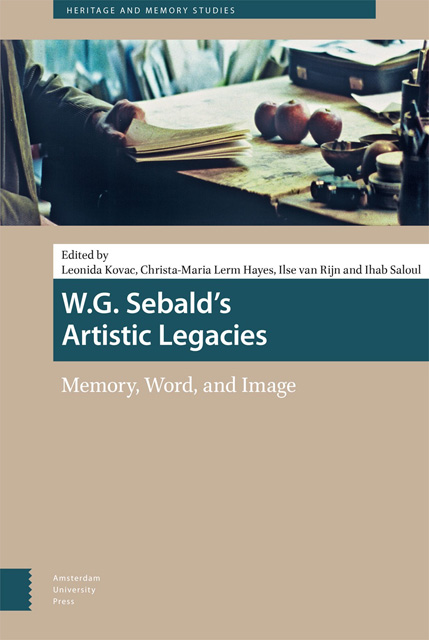11 - On Writing: Propositions for Art History as Literary Practice
Published online by Cambridge University Press: 26 October 2023
Summary
Abstract
This paper embraces W.G. Sebald’s irreducible “writing with pictures” as a proposition for art-historical practices. By exploring theoretical and philosophical approaches to writing’s epistemic capacity, the paper uses Sebald’s work to interrogate a history of art that often struggles to give up restraining the images it covets. The paper develops the characteristics of art-historical writing as a practice that necessarily not only negotiates the boundary of the visual and verbal, but also manifests a literary fiction produced in the discursive framing of knowledge and meaning-making about artifacts, subjects, processes, and their historic contexts. In developing a methodological approach from Sebald’s word-picture combinations, we glimpse an art-historical practice that is necessarily already bound up in the liabilities of its subjects. Following Boris Groys’s suggestion that the writing of art history occurs in a literary space, which implies that the historian, too, is involved in artistic production and thus cannot approach the work (formally) under scrutiny from an external position, the paper reflects on the exigencies of writing about art. Recognizing the limitations of what Derrida identified as teleological genre restriction and institutional pressures to preserve language as a transparent vehicle for “communication,” the paper advances a notion of art history as a literary pursuit that writes (with) pictures. Art history’s recursive self-reflexivity—producing image-texts to trace the words and pictures of artists—is therefore used to reflect on the creative practice of art-history writing, as well as the assumed division between writing’s own form, material, and content.
Keywords: Art and Linguistic Discourse, Translatability, Juridicopolitical, Imperialism, Metaphysical
On Writing: Propositions for Art History as Literary Practice
Much has been said and written about W.G. Sebald’s semi-fictional, associative, and historically motivated writing and his work with pictures. Rather than add another interpretive layer onto the writer’s work, I would like to think methodologically or, perhaps, in a way that thinks alongside the author about theoretical concerns that arise when one writes (with pictures) about an author’s writing that includes pictures.
- Type
- Chapter
- Information
- W. G. Sebald's Artistic LegaciesMemory, Word, and Image, pp. 195 - 226Publisher: Amsterdam University PressPrint publication year: 2023

